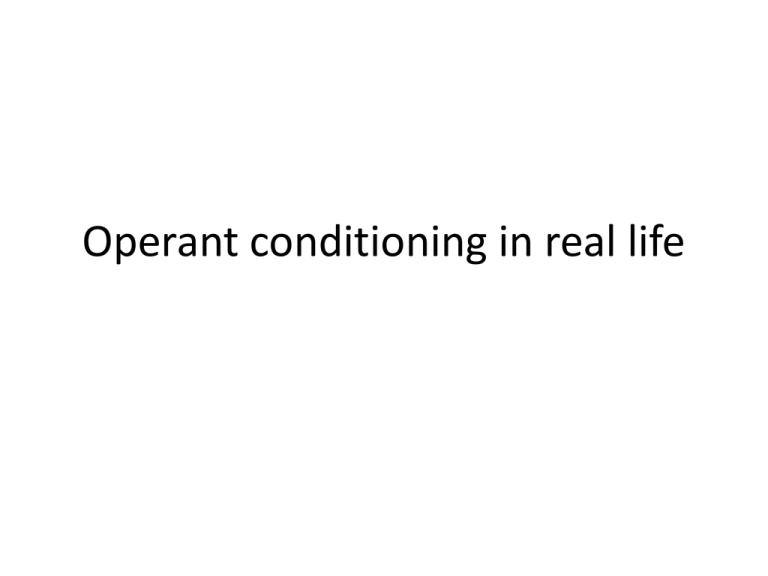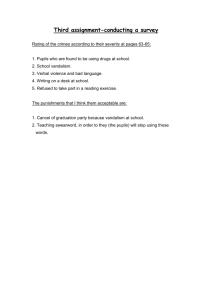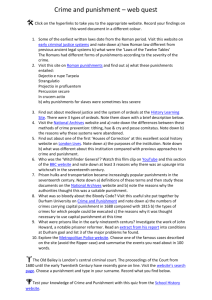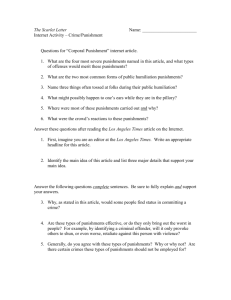Slide 1 - Images
advertisement

Operant conditioning in real life Objectives • Describe behavior modification • List why Punishments fail • Explain internal and external reinforces Scenario • If life at work and home full of same old reinforces and punishers new responses may fail to generalize • F.E. Grumpy boss, unresponsive spouse, fridge full of goodies • Want to change unwanted, dangerous and self defeating behaviors in classroom, athletic field, prison, nursing home, mental hospital? chapter 9 Behavior modification The application of operant conditioning techniques To teach new responses To reduce or eliminate maladaptive or problematic behavior Also called applied behavior analysis Skinners book / Pros and cons of Punishment • The Walden Two, Skinner imagined utopia where reinforces were used so wisely that undesirable behavior was unlikely • But no utopia … • bad habits and anti social acts • Punishments solution? • Most western countries outlaw physical punishment in schools chapter 9 When punishment fails When the recipient responds with anxiety, fear, or rage When it does not immediately follow the behavior When it does not inform the recipient how it might be avoided in the future When a consequence thought to be a punishment proves to be reinforcing Problem= Punishment removed • The power of punishment, to suppress behavior, usually disappears when the threat of punishment is removed. • For example: Drive differently when cop behind you? Nice to little brother when Mom around? More Punishment Problems • Punishment triggers escape or aggression • Usually organisms flee, but if trapped get aggressive • 2 rats in skinner box will fight • People who are in school or home with punishment-aggression links will see this as acceptable. AS A RESULT IT CONTINUES. More Problems w/ punishments • Punishments makes the learner apprehensive, which inhibits learning new and better responses • May surrender to hopelessness (Learned Helplessness) • Can produce depression • Misery does not produce learning Lastly= Uneven application • Not fair or equal. • Boys punished more than girls, minorities more than Caucasian, children receive more physical punishment than adults Uses and abuses of Punishments • Punishments often create immediate change in behavior. As a result punishers feel good, settle the score, getting even, make someone pay. • People are still late, commit crimes. = Difficult to use effectively Does Punishment EVER work? • Sometimes with autistic children using small shock or water in face. • Rewarding (Reinforcing and extinction are better • Guidelines for punishments.=Swift. Certain. Limited in Duration and intensity. Target behavior and not person. No mixed messages. (Brother hit you hit’em back)…scientifically bad parenting • Omission is best. Take something away chapter 9 External and internal reinforcers External reinforcers Reinforcers not inherently related to the behavior being reinforced Internal reinforcers Reinforcers inherently related to the behavior being reinforced External reinforcers may undermine internal reinforcers. chapter 9 Rewards can backfire Preschoolers played with felt-tipped markers. Divided into three groups Given markers again and asked to draw Promised a reward for playing with markers Played markers, then rewarded Summary • Behavior modification • Punishments fail…WHY • Internal /external Reinforces •






